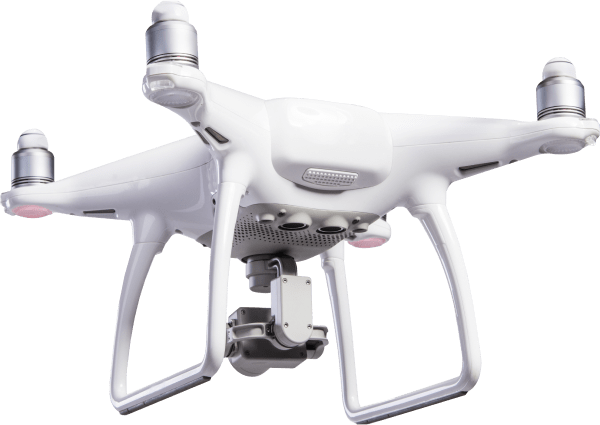The skyline of Britain’s cities is changing, and not just with cranes and high-rise buildings. Above industrial estates, business parks, and construction sites, there’s a new kind of guardian watching from the skies — the drone. Once used mainly for photography or cinematic shots, drones are now becoming an essential part of modern security operations. Across the UK, companies are realising that aerial surveillance is more than a technological upgrade; it’s a smarter way to safeguard assets, monitor operations, and prevent threats before they escalate.
The Rising Need for Smarter Security
Security challenges have evolved rapidly. Businesses face a growing mix of risks — from property vandalism and theft to trespassing and health-and-safety incidents. Traditional systems such as static CCTV cameras and security patrols still play a role, but they often leave gaps in coverage and react after the fact. Drones, by contrast, bring mobility and intelligence into the equation.
Aerial monitoring can scan wide areas quickly, capturing angles and details that fixed cameras simply cannot. This has proven particularly useful for large commercial sites, logistics hubs, and construction projects where constant human supervision is impractical. With the help of advanced imaging and GPS tracking, drones are capable of detecting unusual activity, inspecting hard-to-reach structures, and providing real-time alerts to security teams.
From Eyes in the Sky to Actionable Insights
The modern drone is much more than a flying camera. It’s a data-gathering tool capable of thermal imaging, 4K live streaming, and AI-powered analysis. Imagine a fleet of drones programmed to patrol an industrial estate at regular intervals. If one detects movement in a restricted area after hours, the system can instantly alert on-site personnel, reducing response time dramatically.
For UK businesses, this blend of aerial visibility and data precision means stronger protection with fewer blind spots. Drones are also making it easier to document evidence for insurance claims or compliance audits. This same technology used in drone cinematography in Birmingham for film and media is now being refined for security and surveillance, proving that innovation in one industry often fuels progress in another.
How Drones Are Enhancing Business Security Across Sectors
Different industries in the UK are finding unique ways to integrate drone surveillance into their operations
Construction and Infrastructure:
Large building sites often span acres, with heavy machinery, materials, and personnel constantly moving. Drones help monitor site boundaries, track deliveries, and even ensure workers are wearing protective gear. The technology also supports visual documentation for project management and health-and-safety compliance.
Manufacturing and Warehousing:
Factories and storage facilities benefit from drone patrols that can scan rooftops, perimeters, and loading bays. Thermal sensors can detect overheating machinery or identify potential fire hazards before they become emergencies.
Energy and Utilities:
From inspecting solar farms to monitoring wind turbines, drones are helping energy companies maintain critical infrastructure while improving safety. They can perform checks in remote or hazardous locations, reducing the need for manual inspections.
Events and Venues:
For large gatherings and festivals, aerial monitoring enhances crowd management and safety planning. Businesses offering drone filming for events coverage are already showing how aerial views can map venue layouts and monitor entrances and exits effectively. These same capabilities double as security tools to detect congestion or unauthorised access in real time..
Real Estate and Commercial Property:
In the property sector, drones not only provide marketing visuals but also assist with surveillance and maintenance inspections. Companies offering drone photography services in the UK have seen an increasing overlap between creative and security-focused aerial projects, where footage serves both promotional and protective purposes.
The Advantages of Drone Surveillance for Businesses
The appeal of drone surveillance lies in its efficiency and adaptability. Businesses that have invested in aerial monitoring report several tangible benefits:
- Expanded Coverage:
A single drone can cover multiple vantage points within minutes, replacing the need for numerous fixed cameras. - Faster Response:
Live feeds enable security teams to assess threats immediately and coordinate responses before incidents escalate. - Cost-Effectiveness:
While setup costs vary, drones reduce long-term spending on security patrols, infrastructure maintenance, and false alarms. - Detailed Documentation:
Drones provide clear, timestamped footage that’s valuable for investigations, insurance purposes, and compliance verification.
Deterrence:
The visible presence of a drone often discourages trespassers or potential offenders. Knowing they’re being monitored from above changes behaviour.
Legal and Ethical Considerations
The use of aerial surveillance comes with responsibilities. UK businesses must comply with data protection and privacy laws when capturing or storing footage. It’s important to ensure that drone operations respect Civil Aviation Authority (CAA) regulations, which govern flight zones, altitude limits, and operator licensing.
Working with certified professionals helps navigate these legalities smoothly. Providers like Drone Security and Surveillance Solutions offer tailored packages that align with both safety standards and business requirements. They handle permissions, flight planning, and data security so that organisations can focus on results rather than red tape.
Integrating Drones with Existing Security Systems
Drones don’t replace traditional systems; they complement them. The best approach is a hybrid setup where drones operate alongside CCTV, alarms, and access control. Integration software allows drone feeds to merge with control room dashboards, giving security teams a single interface for real-time monitoring.
For example, a logistics company can link aerial footage with ground sensors to detect unauthorised entry. If a breach occurs, a drone can automatically launch to the location, stream live video, and track movement until the issue is resolved. This synergy between ground-based and aerial systems creates a layered defence strategy that’s both proactive and adaptable.
The Technology Behind Effective Drone Surveillance
Modern surveillance drones are equipped with stabilised high-resolution cameras, GPS navigation, infrared sensors, and autonomous flight capabilities. Some models include object recognition, enabling them to differentiate between vehicles, animals, and humans. These features are essential for reducing false alerts and focusing on genuine security risks.
AI-driven analytics are becoming more common too. Algorithms can identify patterns in movement or temperature, helping predict potential incidents. For example, repeated night-time activity in a normally quiet area could trigger preventive patrols. The same data-driven precision that enhances aerial content for social media campaigns also makes surveillance insights more meaningful and actionable.
Overcoming Weather and Environmental Challenges
UK weather is famously unpredictable, which presents challenges for drone operations. Rain, fog, and wind can affect flight stability and visibility. However, improvements in drone design and software are making all-weather surveillance more viable. Drones can now adapt flight routes in response to changing wind speeds or switch to thermal imaging in low-light conditions. Learning how weather conditions affect aerial shoots helps operators plan missions safely and effectively, ensuring consistent performance even in less-than-ideal conditions.
Building Trust with Staff and Communities
Transparency is key to successful drone surveillance. Businesses should communicate clearly about where and why drones are being used. This fosters trust among employees and surrounding communities. When people understand that drones are there to protect rather than intrude, acceptance grows naturally. Public demonstrations or short video explainers — similar to aerial property photography services — can help show how the technology works and what benefits it brings.
The Future of Drone Surveillance in the UK
The next few years will likely see drones become standard across many sectors. As battery life improves and automation increases, drones will be able to patrol independently, recharge automatically, and even share data through secure cloud networks. Combined with AI and machine learning, they will provide predictive insights that go beyond simple observation.
There’s also a growing conversation around sustainability. Electric-powered drones produce less noise and carbon emissions compared to traditional patrol vehicles, aligning with the UK’s environmental goals. For forward-thinking businesses, investing in drone security isn’t just about protection; it’s also about responsibility and modernisation.
The Human Element Still Matters
Despite their sophistication, drones are still tools — and their effectiveness depends on the people behind them. Skilled operators interpret data, make quick decisions, and maintain safe flight practices. The best security strategies blend technology with human judgment, ensuring that drones enhance rather than replace human expertise.
Drone pilots often work closely with security managers and IT teams to design flight paths, manage data storage, and maintain regulatory compliance. This collaboration ensures that every flight contributes meaningfully to the overall safety framework.
Why UK Businesses Are Turning to Professional Drone Services
The practical and financial advantages of drone surveillance are driving widespread adoption, but expertise remains essential. Professional providers bring not only the right equipment but also the necessary training and certifications. They understand how to combine creative aerial skills with analytical precision, delivering results that improve both safety and operational efficiency.
Many companies that began with creative aerial services — such as the evolution of drone photography — have naturally expanded into security-focused offerings. Their experience with camera technology, flight dynamics, and image processing translates perfectly into high-quality surveillance work.
A New Perspective on Business Security
Drones offer more than a new angle on security — they represent a new mindset. Instead of reacting to problems, businesses can anticipate them. Aerial surveillance brings agility and intelligence to protection strategies, helping organisations operate confidently in an increasingly complex environment.
As technology continues to evolve, so will the ways drones serve businesses. From monitoring logistics to safeguarding event venues, the possibilities are wide and promising. Each advancement brings the UK one step closer to a future where every business, regardless of size, can afford proactive, efficient, and reliable security.
Final Thoughts and Call to Action
The rise of drone surveillance marks a defining shift in how UK businesses approach safety. What began as a creative tool for filming has become an indispensable ally in protecting assets, people, and reputations. The sky is no longer just a backdrop — it’s part of the security strategy.If your organisation is ready to explore how aerial monitoring can strengthen your defences, consider partnering with experts who understand both the technology and its real-world applications. Visit Flight Photography UK to discover advanced drone security and surveillance solutions designed to protect your business with clarity, precision, and peace of m


